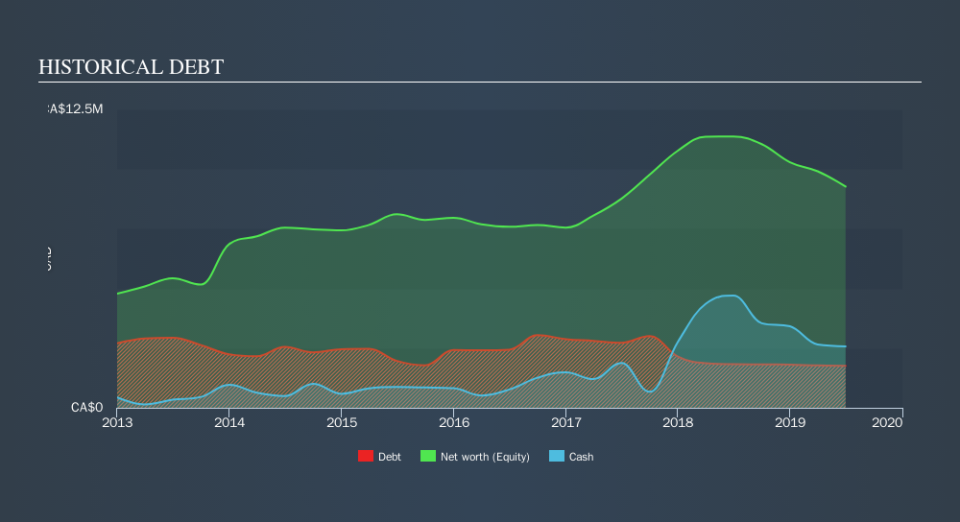Is iFabric (TSE:IFA) Weighed On By Its Debt Load?

David Iben put it well when he said, 'Volatility is not a risk we care about. What we care about is avoiding the permanent loss of capital. So it seems the smart money knows that debt - which is usually involved in bankruptcies - is a very important factor, when you assess how risky a company is. Importantly, iFabric Corp. (TSE:IFA) does carry debt. But is this debt a concern to shareholders?
Why Does Debt Bring Risk?
Debt assists a business until the business has trouble paying it off, either with new capital or with free cash flow. In the worst case scenario, a company can go bankrupt if it cannot pay its creditors. However, a more common (but still painful) scenario is that it has to raise new equity capital at a low price, thus permanently diluting shareholders. By replacing dilution, though, debt can be an extremely good tool for businesses that need capital to invest in growth at high rates of return. The first thing to do when considering how much debt a business uses is to look at its cash and debt together.
See our latest analysis for iFabric
What Is iFabric's Net Debt?
The chart below, which you can click on for greater detail, shows that iFabric had CA$1.76m in debt in June 2019; about the same as the year before. However, its balance sheet shows it holds CA$2.58m in cash, so it actually has CA$815.2k net cash.
How Strong Is iFabric's Balance Sheet?
We can see from the most recent balance sheet that iFabric had liabilities of CA$1.39m falling due within a year, and liabilities of CA$1.73m due beyond that. On the other hand, it had cash of CA$2.58m and CA$2.41m worth of receivables due within a year. So it actually has CA$1.87m more liquid assets than total liabilities.
This surplus suggests that iFabric has a conservative balance sheet, and could probably eliminate its debt without much difficulty. Simply put, the fact that iFabric has more cash than debt is arguably a good indication that it can manage its debt safely. When analysing debt levels, the balance sheet is the obvious place to start. But it is iFabric's earnings that will influence how the balance sheet holds up in the future. So if you're keen to discover more about its earnings, it might be worth checking out this graph of its long term earnings trend.
Over 12 months, iFabric made a loss at the EBIT level, and saw its revenue drop to CA$9.8m, which is a fall of 49%. That makes us nervous, to say the least.
So How Risky Is iFabric?
Statistically speaking companies that lose money are riskier than those that make money. And the fact is that over the last twelve months iFabric lost money at the earnings before interest and tax (EBIT) line. Indeed, in that time it burnt through CA$2.0m of cash and made a loss of CA$1.8m. Given it only has net cash of CA$815.2k, the company may need to raise more capital if it doesn't reach break-even soon. Even though its balance sheet seems sufficiently liquid, debt always makes us a little nervous if a company doesn't produce free cash flow regularly. When I consider a company to be a bit risky, I think it is responsible to check out whether insiders have been reporting any share sales. Luckily, you can click here ito see our graphic depicting iFabric insider transactions.
Of course, if you're the type of investor who prefers buying stocks without the burden of debt, then don't hesitate to discover our exclusive list of net cash growth stocks, today.
We aim to bring you long-term focused research analysis driven by fundamental data. Note that our analysis may not factor in the latest price-sensitive company announcements or qualitative material.
If you spot an error that warrants correction, please contact the editor at editorial-team@simplywallst.com. This article by Simply Wall St is general in nature. It does not constitute a recommendation to buy or sell any stock, and does not take account of your objectives, or your financial situation. Simply Wall St has no position in the stocks mentioned. Thank you for reading.

